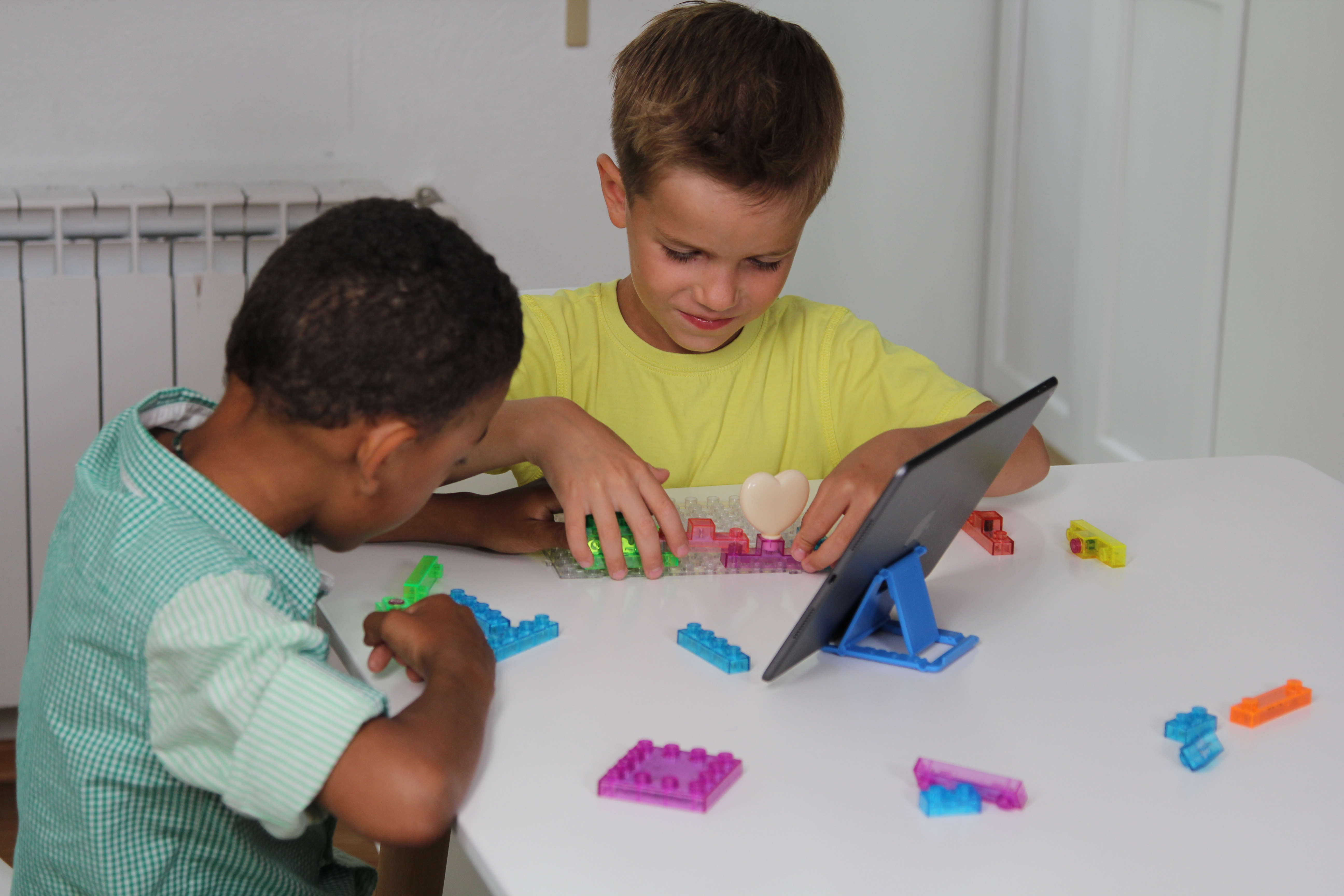Normal Poems worksheets activities for Ages 3-8
10 filtered results
-
From - To
Explore our engaging Normal Poems worksheets and activities designed for children ages 3-8! Foster your child's love for poetry with interactive resources that make learning fun and accessible. Our worksheets feature a variety of normal-themed poems, encouraging creativity and language development. Each activity reinforces key literacy skills such as rhyme recognition, comprehension, and vocabulary building, all while allowing children to express themselves through art and storytelling. Perfect for home or classroom use, these captivating worksheets will enhance and enrich your child’s educational journey. Download today to ignite imagination and promote a lifelong appreciation for poetry in your young learners!
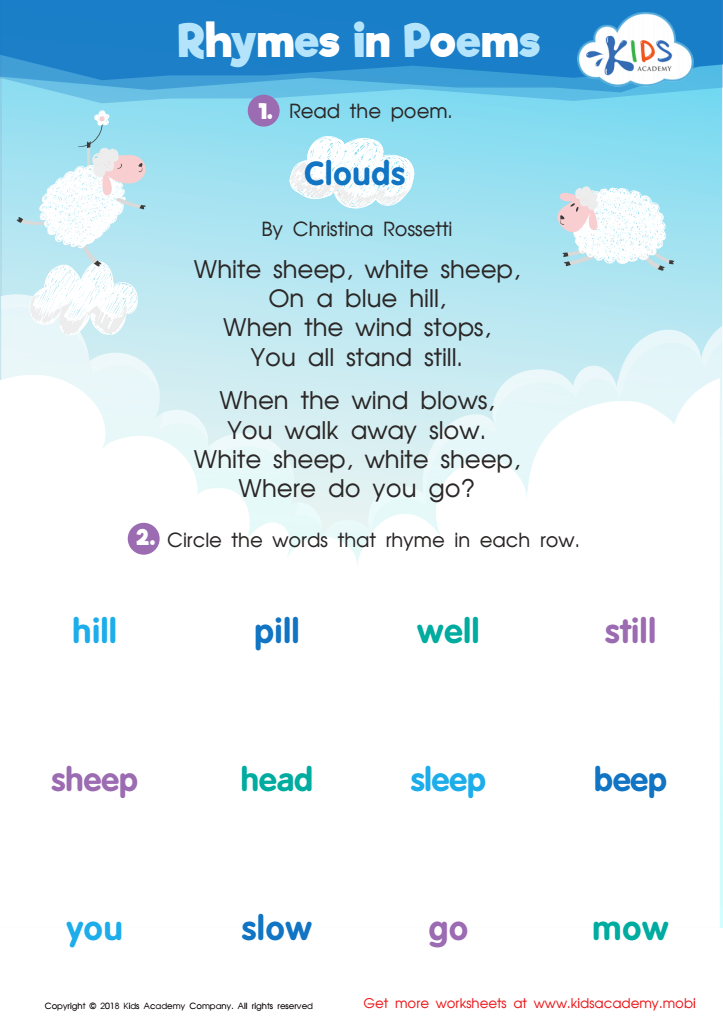

Rhymes in Poems Worksheet
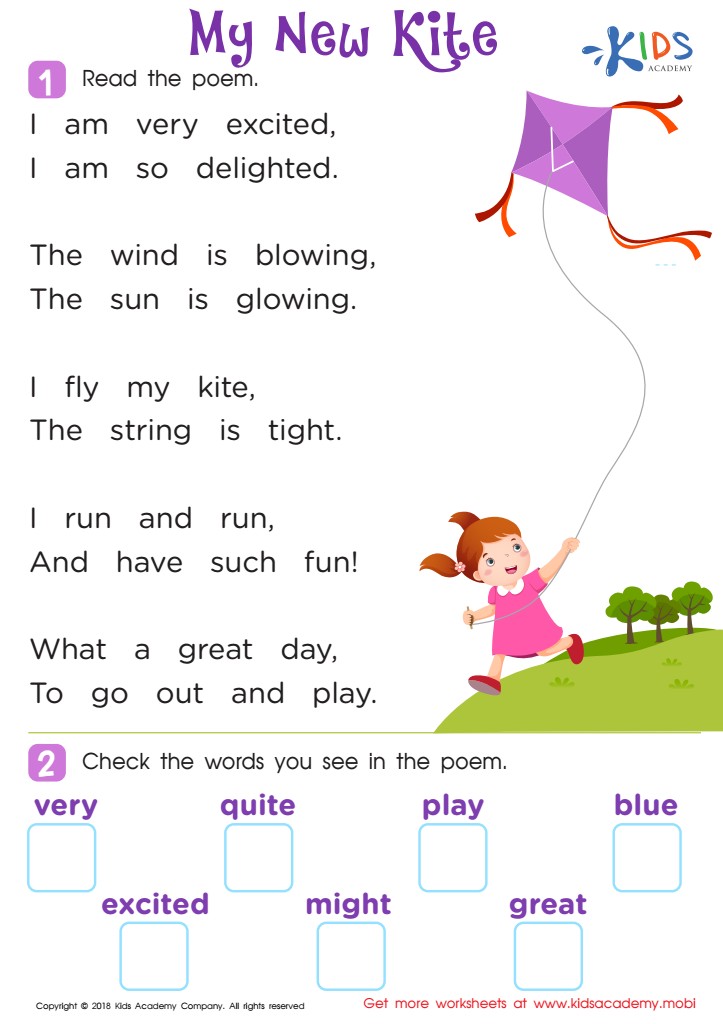

Poem: My New Kite Worksheet
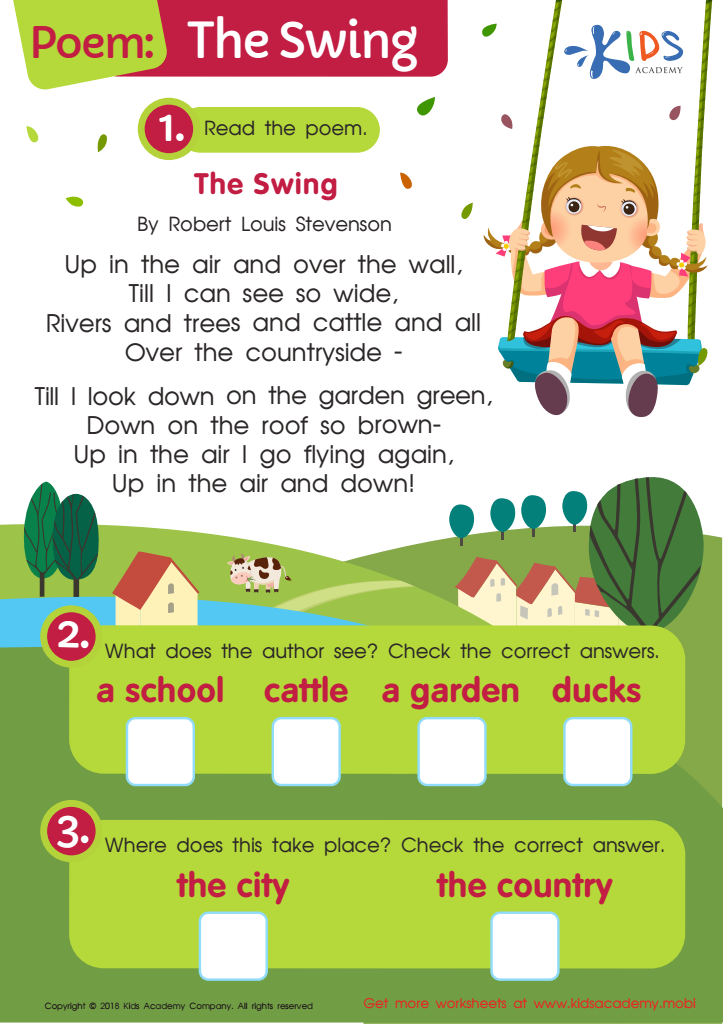

Poem: The Swing Worksheet
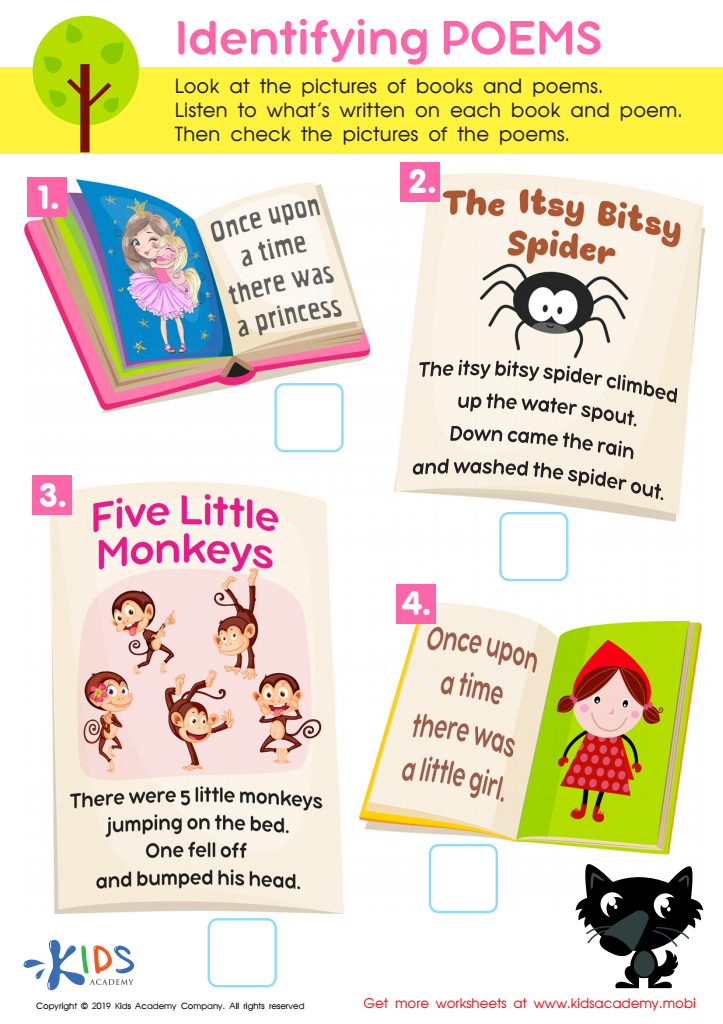

Identifying Poems Worksheet
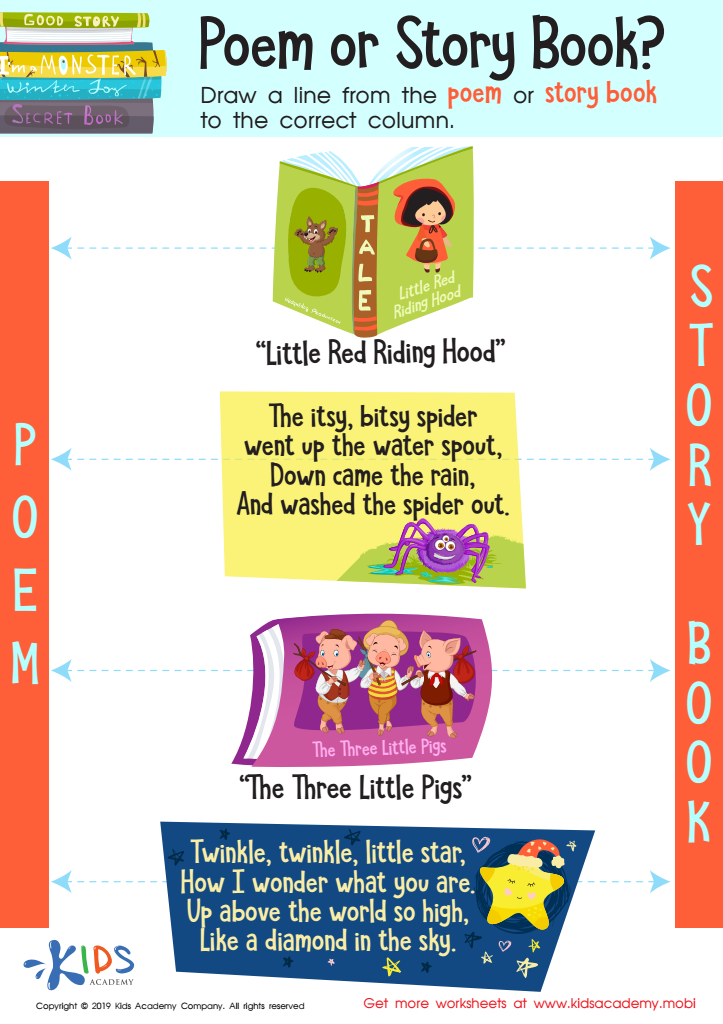

Poem or Story Book? Worksheet
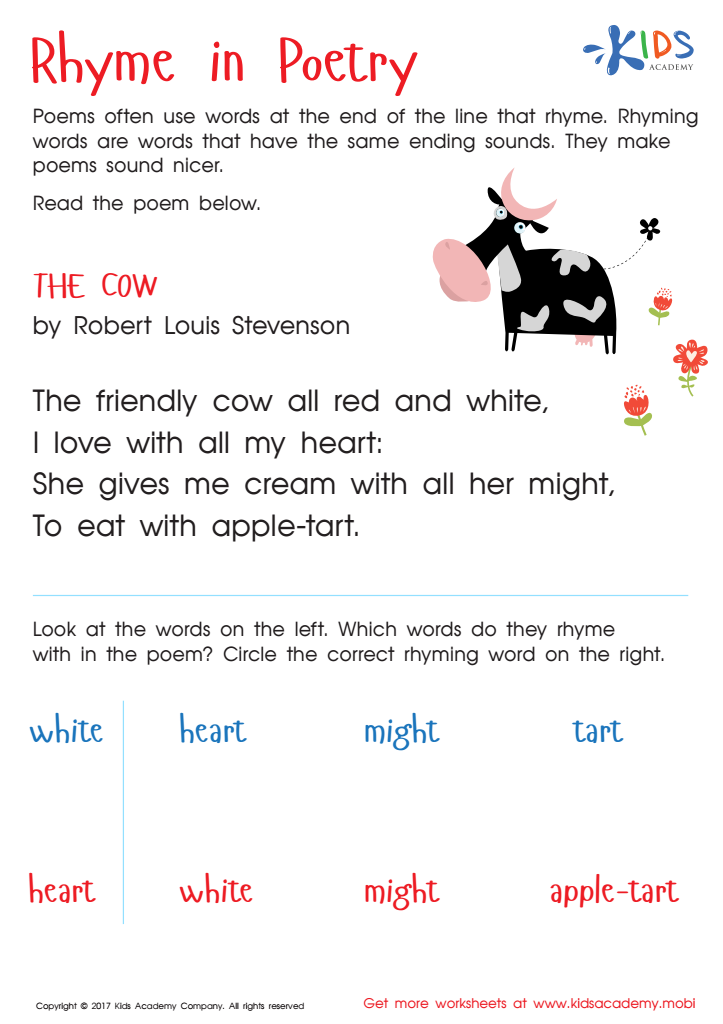

Rhyme In Poetry Worksheet
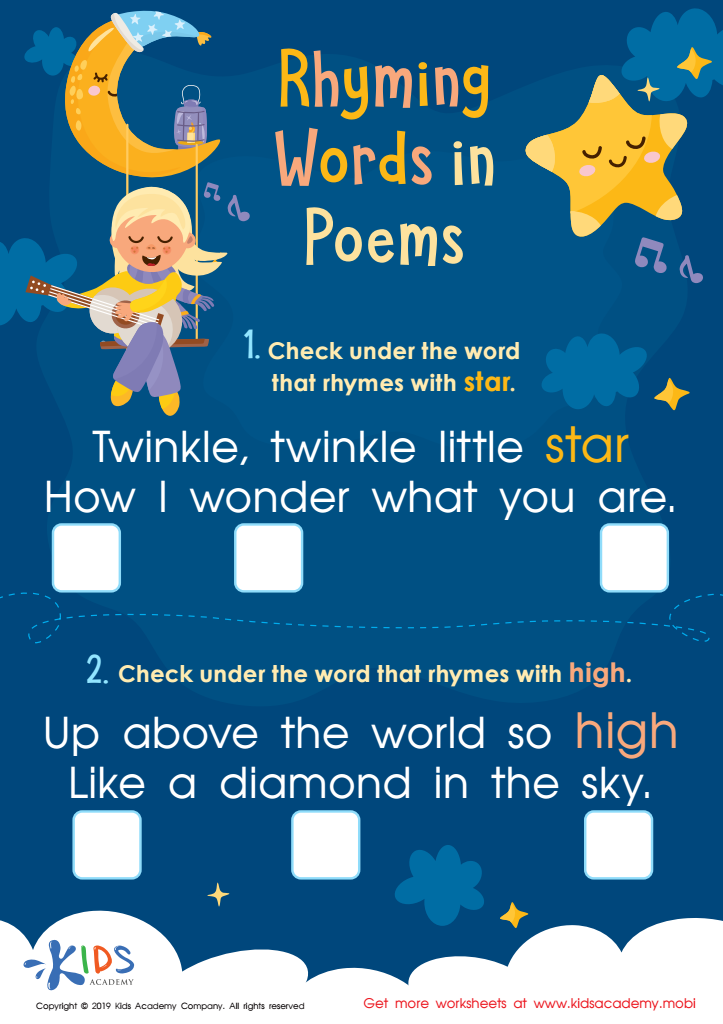

Rhyming Words in Poems Worksheet
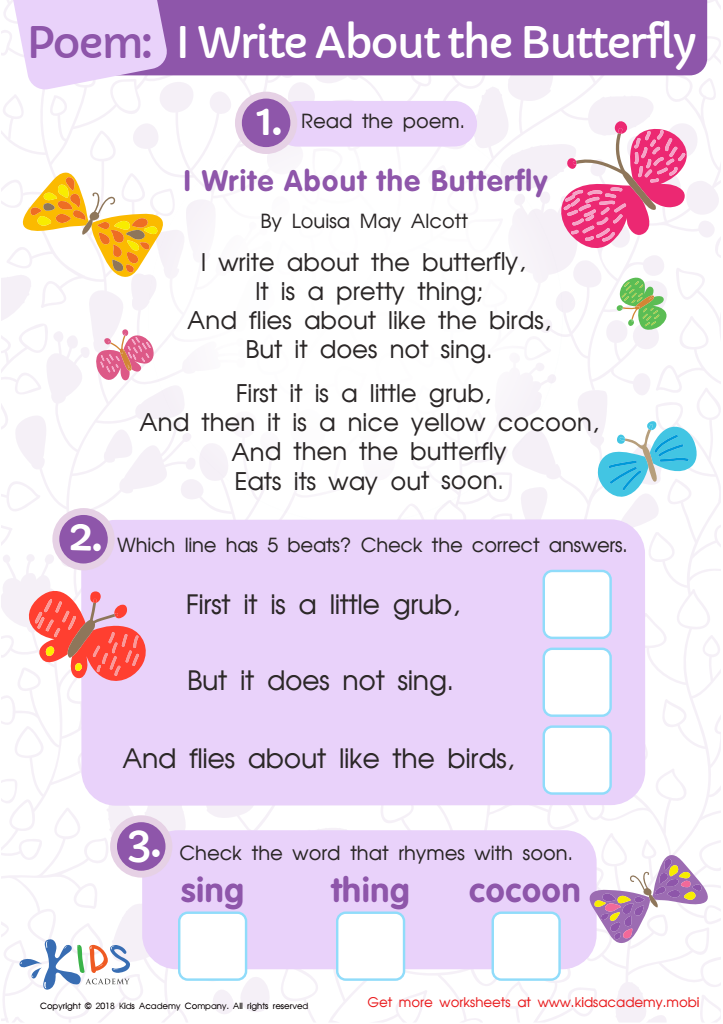

Poem: I Write About The Butterfly Worksheet
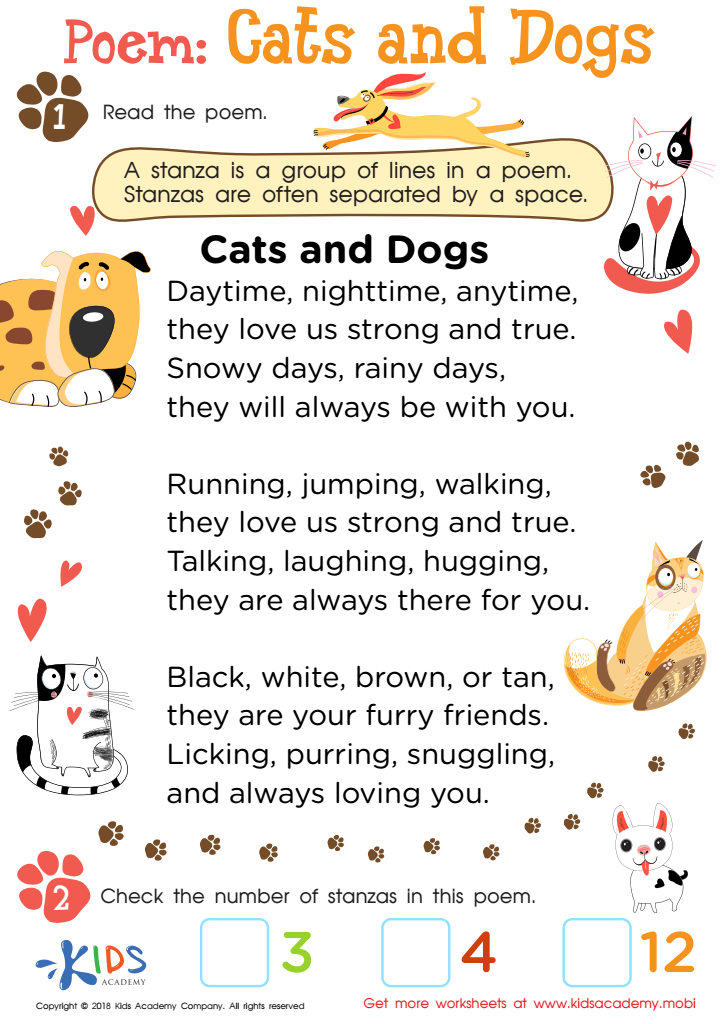

Poem: Cats and Dogs Worksheet
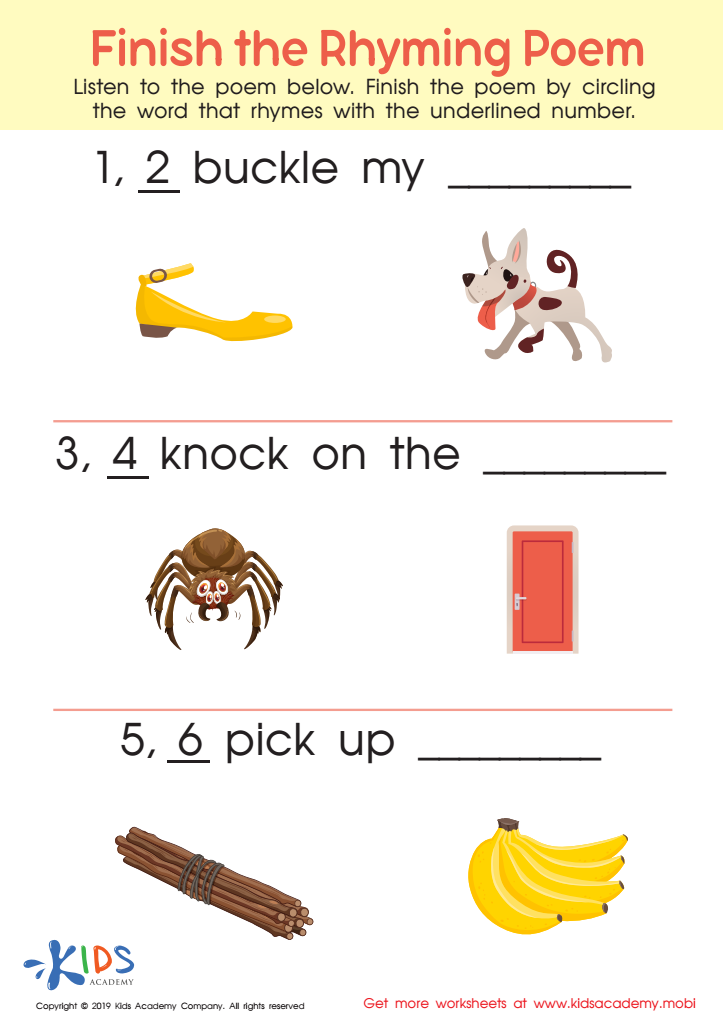

Finish Rhyming Poem Worksheet
Normal Poems activities for ages 3-8 provide essential benefits for children's early literacy and cognitive development. These activities engage young learners through rhythm, rhyme, and imaginative language, fostering a love for reading and storytelling from an early age. Poetry introduces children to language patterns, enriching their vocabulary while enhancing phonemic awareness, which is crucial for developing strong reading skills.
Moreover, Normal Poems promote creativity and self-expression. By participating in these activities, children learn to articulate their feelings and thoughts in a fun and engaging way, boosting their confidence and communication skills. The collaborative aspect of performing and sharing poems helps them develop social skills, teamwork, and empathy.
Additionally, these activities can strengthen listening and comprehension skills, as children navigate the nuances of poetic expression. Customizing poems around themes relevant to their lives can also help children make connections to their experiences, making learning more meaningful.
By incorporating Normal Poems into educational settings at home or in school, parents and teachers play a vital role in nurturing children's literacy, emotional intelligence, and creativity—essential foundations for their lifelong learning and personal growth.
 Assign to My Students
Assign to My Students



